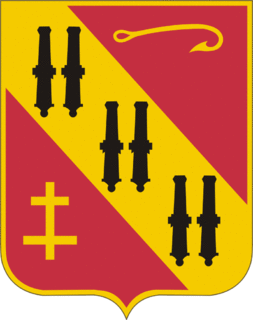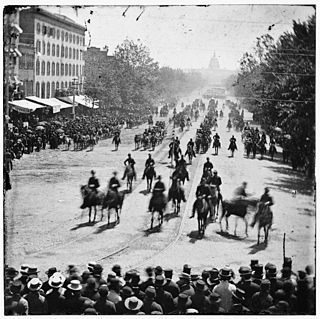| 5th U.S. Light Artillery, Battery "C" | |
|---|---|
| Active | September 1861 to 1865 |
| Country | United States |
| Allegiance | Union |
| Branch | Field Artillery Branch (United States) |
| Engagements | Seven Days Battles Battle of Mechanicsville Second Battle of Bull Run Battle of Antietam Battle of Fredericksburg Battle of Chancellorsville Battle of Gettysburg New York City Draft Riots Mine Run Campaign Battle of the Wilderness Battle of Spotsylvania Court House Battle of Cold Harbor Siege of Petersburg Battle of Jerusalem Plank Road First Battle of Deep Bottom Battle of Boydton Plank Road Battle of Fort Stedman Appomattox Campaign |
Battery "C" 5th Regiment of Artillery was a light artillery battery that served in the Union Army during the American Civil War.

The 5th Air Defense Artillery Regiment is an Air Defense Artillery regiment of the United States Army, first formed in 1861 in the Regular Army as the 5th Regiment of Artillery.

During the American Civil War, the Union Army referred to the United States Army, the land force that fought to preserve the Union of the collective states. Also known as the Federal Army, it proved essential to the preservation of the United States of America as a working, viable republic.

The American Civil War was a war fought in the United States from 1861 to 1865, between the North and the South. The Civil War is the most studied and written about episode in U.S. history. Primarily as a result of the long-standing controversy over the enslavement of black people, war broke out in April 1861 when secessionist forces attacked Fort Sumter in South Carolina shortly after Abraham Lincoln had been inaugurated as the President of the United States. The loyalists of the Union in the North proclaimed support for the Constitution. They faced secessionists of the Confederate States in the South, who advocated for states' rights to uphold slavery.








